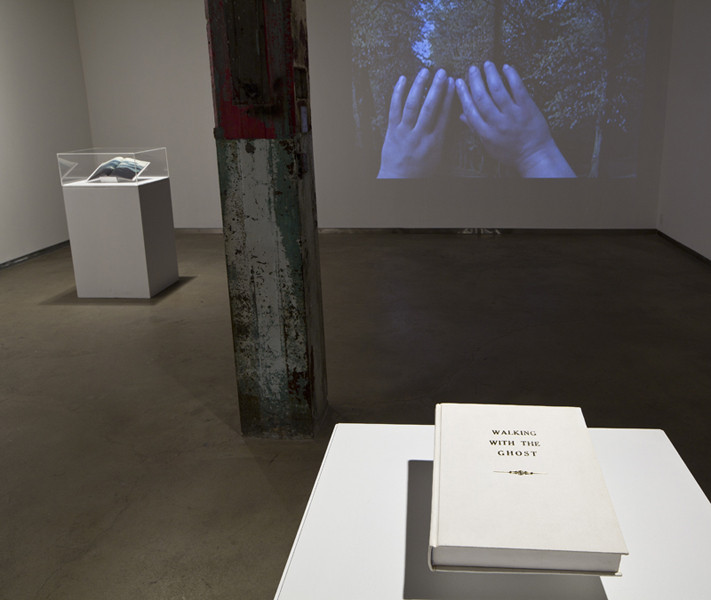
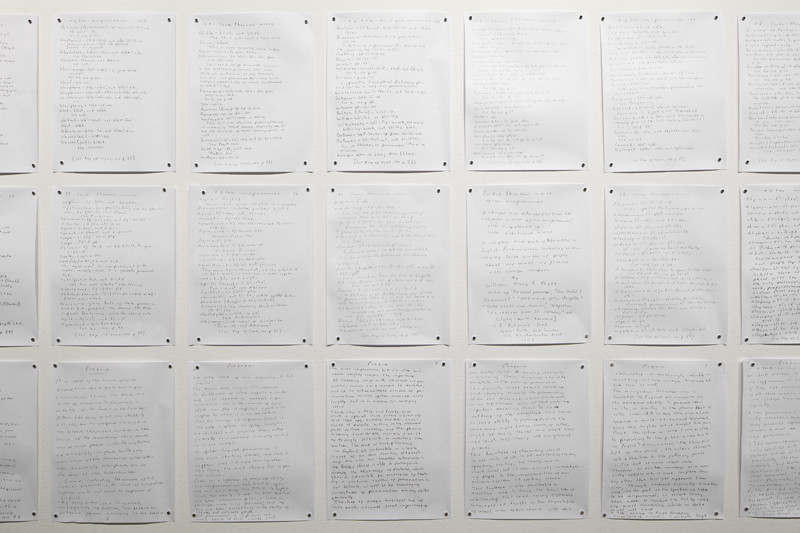
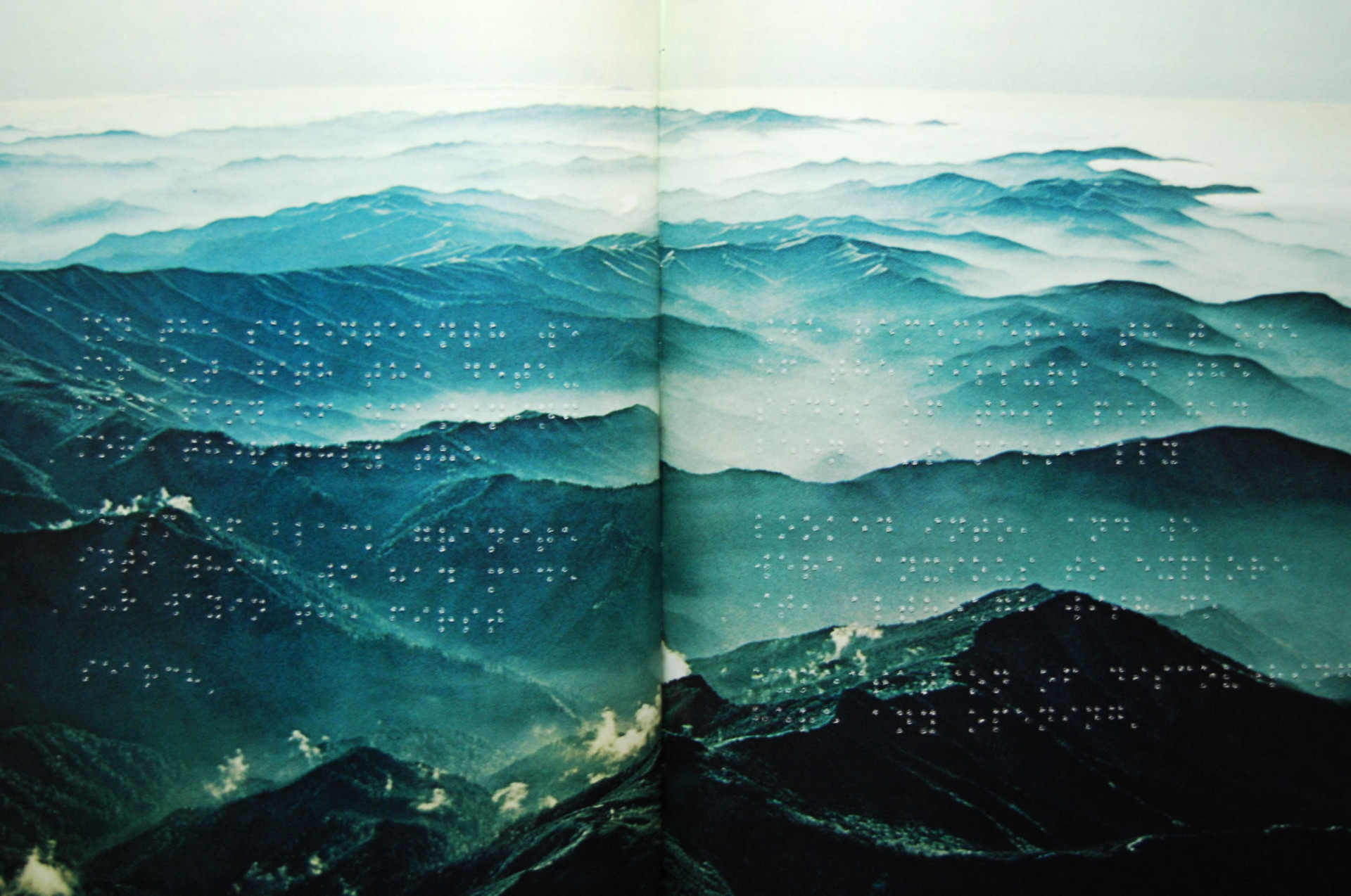
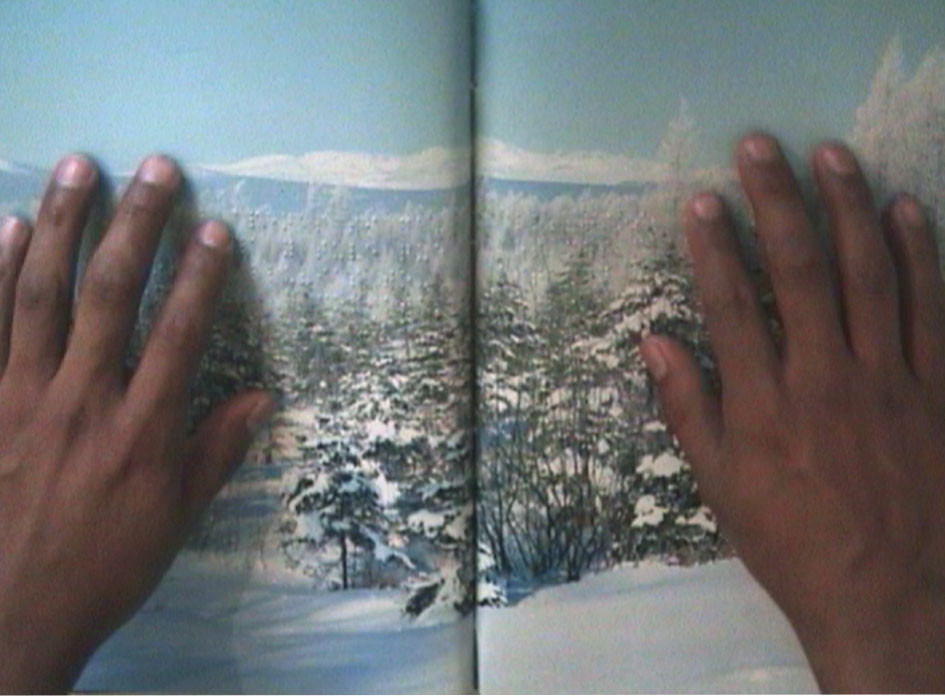
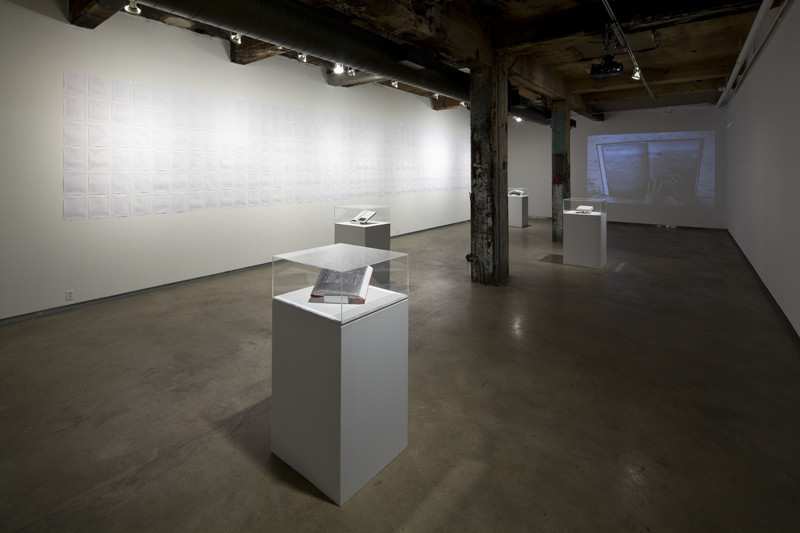
Curator: Caroline Andrieux
All vision takes place somewhere in tactile space since vision is palpation by the gaze.
Maurice Merleau-Ponty
Whether it is by their form or by their meanings, the works Mexican artist Ricardo Cuevas is presenting in his exhibition From Aachen to Iser at the Darling Foundry refer to books and, by way of this medium, to languages. Through visual language and sound language, yet beyond the visible and the audible, the artist’s works call upon our senses first and foremost, in a phenomenological approach. “The visible is what we grasp with our eyes, the sensible is what we grasp with our senses”, Maurice Merleau-Ponty states in the first pages of one the most significant works in the philosophy of art in the XXth century, The Phenomenology of Perception, where he calls on the reader to rethink the notions of feeling, seeing, hearing.
In Fear no Thunder, nor Lightning, a blind man reads a text written in Braille, from pages of a book on which the panoramic image of a mountain landscape is printed. Walking with the Ghost is a closed book that can never be opened without destroying its content, since the text is printed on photographic paper that was developed, but not fixed. The viewer is thus caught in a dilemma the artist likens to that of Dmitiri Nabokov, son of writer Vladimir Nabokov who, in his will, asks his heirs to destroy his last manuscript. Index reveals the handling and reading of a book in Braille by a blindman where the process of reading turns into a drawing, while in Understanding, a how-to book about photographing the cosmos, most of the letters are blocked out, leaving only the ‘O’s and ‘zero’s in plain view.
12 000 words often mispronounced is a book that compiles the transcribing of the 12,000 words most often mispronounced in the English language. The artist offers a sound version, not of the pronunciation, but of the recording of the handwriting of each of those words, along with the installation of 276 sheets covered with his handwriting. The installation, despite occupying most of the material gallery space, plays as a support for the execution of the work, but not as the ultimate work - the captation of the sound itself, which is immaterial. Redemption is the most recent work by Ricardo Cuevas, created at the Darling Foundry as part of the Residency of the Americas of the Conseil des Arts de Montréal. It consistsof a prie-dieu that broadcasts racist jokes. The only piece not involving paper and writing, it still features the tension between message and medium found in all the artists’ works. With an approach that is both conceptual and phenomenological, Ricardo Cuevas questions the way these different languages intermix, echo each other, and sometimes contradict each other, using this duality between the material and the immaterial, the visible and the invisible as a crucial springboard for his creative process.
Caroline Andrieux
